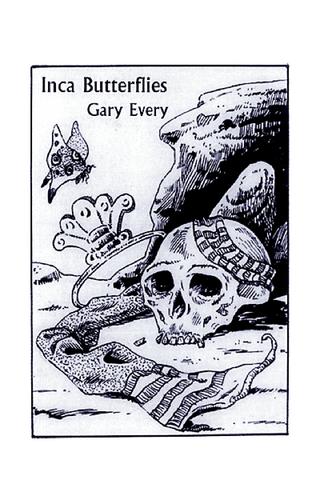Every ponders this slice of history through the life of “the son of the Son of the Sun,” the prince, Huaina Capac, the first part opening with Capac as a young boy, giddy at the sight of passing butterflies as his impatient old instructor attempts to convince Capac of the gravity of his role as the leader of the Tahuantinsuyu people. Blissfully oblivious to the fact that he will be the last of his royal line, the boy walks with the worrisome old man through splendorous hummingbird gardens and fruit orchards, as well as trees sculpted from silver and gold, delicate fruit and leaves ornamenting their metal branches. When Capac, in his gleeful obsession with catching one of the elusive butterflies, causes himself and the old man to tumble to the ground, the instructor anoints him with oils distilled from flowers because it is not appropriate for a prince to breath dust. Then the butterflies the giggling boy had pursued are drawn to him by the hundreds, which is later taken as a confirmation of Capac's divinity.
The next section flashes forward to Capac as a young man carried at the rear of a triumphant war procession, which includes drums made from stretched human skins, beaten with bones. The future king is bored until he notices a butterfly and smiles, trying in vain to stab the flitting creature with his sword of silver and bone.
Segue to conquistadors led by a Native American guide, using an iron sword to hack through the jungle en route to the fabled Inca city of silver and gold. When a butterfly tickles his nose, Francisco Pizarro claps his hands together, smashing the creature between his palms.
Armed with a blunderbuss, its terrifying roar like nothing Huaina Capac's people had ever encountered before, Alejo Garcia leads his fellow conquistadors and an army of Chiriguana warriors against the Tahuantinsuyu people. But Huaina Capac meets them with a much larger and more organized army than the conquistadors ever expected, hungry condors drawn to the escalating battles.
The first section ends with the clash of deities. Capac and his army are victorious, but a sudden wind blows open the Spaniards' book and releases evil spotted butterflies which cover Capac's face, infecting him with smallpox.
Every is an inventive writer, and this chapbook encapsulates the bittersweet truth: Life is a thing of dualities, where the only constant is change. Maybe it's good not to deceive ourselves too much about our mortality, yet to still chase our butterflies while we can.









